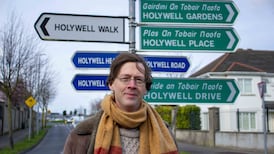Brian Sewell, who has died aged 84, was for many years the best-known, most outspoken and most widely read art critic in Britain.
His column in the Evening Standard was loved even by those who knew nothing about the artists he was laying into. In recent times he wrote with equal fury on a vast range of other subjects, particularly the postures of political leaders, which eventually won him the Orwell Prize for political writing.
In and out of the art world, Sewell was a controversial figure but he excited huge affection from those who knew him.
He also incurred the wrath of museum curators and art dealers. In 1994 a group of eminent artists and critics wrote in protest to the Standard claiming its art critic was "deeply hostile to and ignorant about contemporary art".
The sharpness and vitality of Sewell’s pen were complemented by his ultra-posh voice. Even he would admit his speech had “some of the intonations of Vita Sackville-West”.
Brian Sewell was born in Market Bosworth, Leicestershire, and brought up by his mother, Jessica, and stepfather, Robert Sewell, in London. Almost half a century later he discovered that his real father was the composer Peter Warlock, who had killed himself seven months before his son's birth. Aged four he was taken to the National Gallery and was spellbound by Murillo's The Heavenly and Earthly Trinities and Durer's The Madonna With the Iris.
At 11 he became a day boy at Haberdashers’ Aske’s Boys’ School in Hampstead. After school he became a star pupil at the Courtauld Institute of Art and a particular protégé of its director, Anthony Blunt. It was partly through Blunt’s influence that he sailed into a senior job at the auctioneers Christie’s. Though his knowledge and eye were never disputed, many of his colleagues found him waspish and impossible to deal with.
In 1966, Sewell resigned from Christie’s and became a freelance art adviser, making long trips across Europe.
The turning point in his life came in 1979 when his mentor, Blunt, was exposed as a Soviet spy. Mobbed outside his house, Sewell became a household name overnight – his face and voice creating such a powerful impression that he seemed to have upstaged Blunt himself.
His first art column in Tatler appeared in June 1980. Four years later he was hired by the Standard. He took pleasure in his writing, using baroque language and long sentences, rich in sexual and scatological terminology, to attack those contemporary practitioners of art whom he saw as derivative.
Ben Nicholson he found a “minor craftsman”, Gwen John “an extreme example of the archetypal silly woman”, LS Lowry “tedious, repetitive, lacklustre and stereotypical”.
He mocked Lucian Freud for “allowing his paintbrush to crawl into a woman’s crotch with the insistence of a caterpillar into a cabbage heart”. He lashed out at Andy Warhol: “Few men have had a more destructive influence on art.”
In the 1990s he began to write on a host of other subjects, lambasting viewers of Cilla Black and readers of Jeffrey Archer and dismissing Princess Diana as “a silly young woman”.
He thought the Iraq war immoral, and when Tony Blair asked people to trust his government, Sewell responded: “Trust them? I would sooner trust ferrets to feed a pet rabbit lettuce.”
He loved animals devotedly and was particularly attached to the dogs he had picked up as strays, even those with disagreeable personalities. When he moved house, he methodically dug up the remains of eight dogs and reburied them in his new garden. “I wanted them with me,” he explained. “If they’d been humans, I wouldn’t have cared a fig.”
He produced two bestselling volumes of autobiography: Outsider and Outsider II (2011 and 2012). He claimed to hate his celebrity status and remained wry about his homosexuality, a condition he described as "an affliction". Asked if his writing had done any good, he replied: "None whatever. I haven't had the slightest effect on anything in politics or the arts."
He was high-spirited to the end: passionate, cruel, kind, far-sighted, puffed up, self-hating – and the author of many secret acts of kindness, always loyal to old friends and new.









